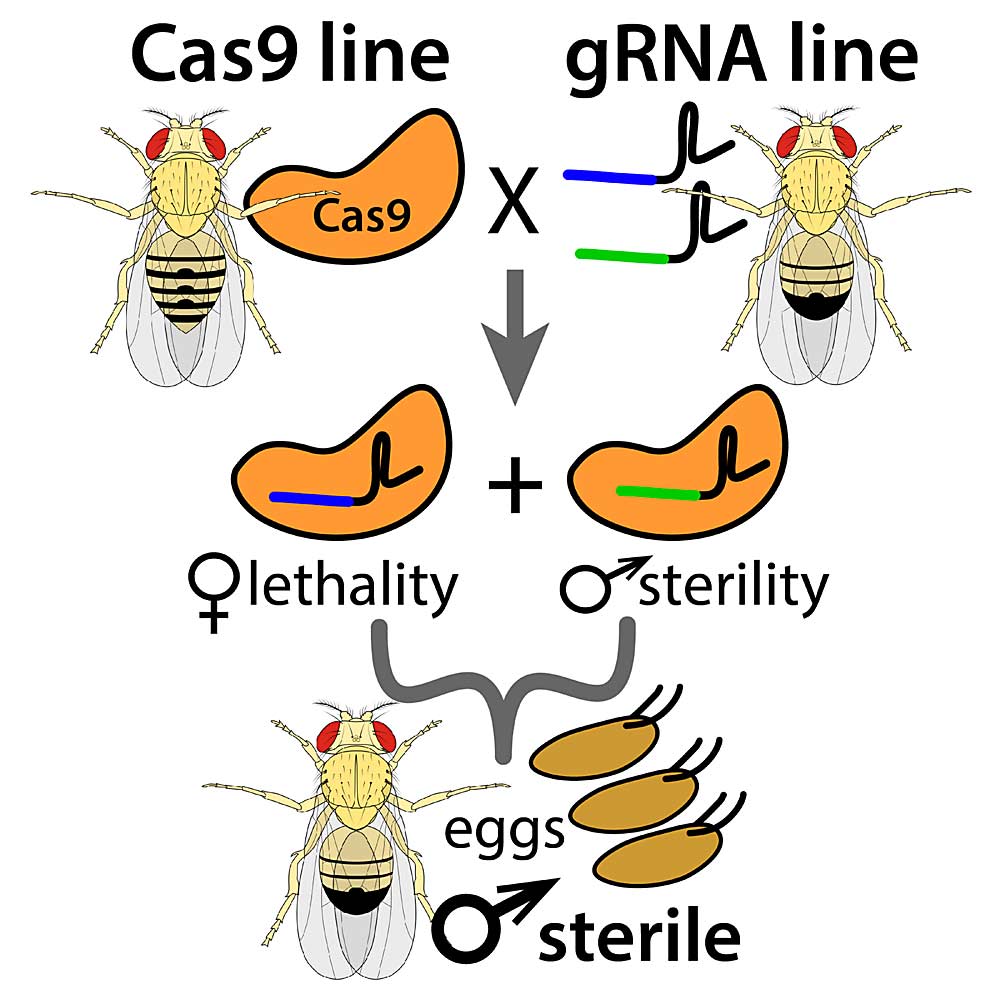A group of California scientists is looking for ways to breed the dreaded spotted wing drosophila to death through genetic manipulation, while cherry and blueberry organizations up and down the West Coast are funding their work.

Anna Buchman
Anna Buchman, a researcher at the University of California, San Diego is leading three genetic projects aimed at crashing the populations of SWD, an invasive pest challenging integrated pest management programs for cherries throughout the West.
Each project takes a different approach, but all involve editing the genetics of laboratory-reared insects that, if all goes right, would mate with wild populations in ways that would spell their demise.
“This technology is up and coming,” Buchman told growers in November at the Cherry Research Review in Hood River, Oregon.
Using gene editing to control insect populations is rapidly advancing and controversial. Experiments are underway with other insects, including mosquitoes and the Mediterranean fruit fly.
Last year, scientists at Imperial College London successfully wiped out a laboratory population of mosquitoes using the method.
“It will be here eventually, and it will eventually work,” Buchman said.
Buchman is a research data analyst at the Akbari Lab, headed by Omar Akbari, an assistant professor of biological sciences at UC San Diego. Akbari also oversees many projects involving mosquitoes.
Buchman is steering three veins of work that apply to SWD and will seek to run field trials for whichever pans out first. The work is among many efforts to identify tools — other than chemical sprays — to control the invasive pest, which has been showing an early sign of resistance.
Two of her techniques involve a gene drive, which is when genetic engineering alters the normal rules of random gene inheritance so that a key trait spreads through a population much faster.

Precision-guided Sterile Insect Technique involves using CRISPR/Cas9 and guide RNAs to genetically create a brood of dead females and sterile males, which would then be released to mate with wild females that would in turn lay unviable eggs, as this diagram shows. It’s one of several projects underway by researchers at the University of California, San Diego to use genetic manipulation as a tool to control spotted wing drosophila. (Courtesy Anna Buchman/University of California, San Diego)
These are the three prongs to Buchman’s efforts:
—Precision-guided Sterile Insect Technique, which involves repeated releases of genetically sterile males. The method allows the sterile males to mate with wild females, which then lay unviable eggs.
—Medea, a self-sustaining gene drive that dramatically skews normal inheritance and could be used to spread a conditional lethality gene, such as one that kills the bug when exposed to a certain air temperature threshold. Buchman and her colleagues built one version of this gene drive that was 97.7 percent effective. Later, they created a gene drive that is 100 percent effective and linked it to a lethality gene, successfully testing the combination on a different species of fruit fly called Drosophila melanogaster. The next step is to replicate that success in the SWD. Medea is named after the ancient Greek mythological figure who murdered her own children.
—CRISPR/Cas9 suppression gene drives that sterilize or kill all females as they spread, thus causing an all-male population collapse.
Of those, the sterile insect method most likely will first reach the stage of field cage trials, experiments staged under normal orchard conditions but contained in cages or a greenhouse-like facility, Buchman said.
The United States, as well as countries all over the world, have precedent for using sterilized insects to suppress or eradicate populations of wild insects. However, usually the bugs are sterilized by radiation, which risks weakening the insects and making them less competitive as breeders.
Genetic editing doesn’t do that, Buchman said. Gene work targets only the specific trait you want to control, leaving everything else about the bug unscathed.
The science of all the projects is heady and full of terminology such as mediated homing-based drives, mutagenesis and biased inheritance. But Buchman and her colleagues have proven a lot of it in principle, she said. For example, with CRISPR/Cas9, they have successfully targeted SWD’s eye pigment gene, turning its red eyes white.
The laboratory’s work is funded by the Washington Tree Fruit Research Commission, the California Cherry Board, the Oregon Sweet Cherry Commission and the California Blueberry Commission, to the tune of $126,000 in 2019, said Nick Matteis, an executive of the California Cherry Board.
The organization also is helping Buchman seek permission from the U.S. Department of Agriculture for trials, something they expect sometime in 2020 at the earliest, Matteis said. •
—by Ross Courtney






Leave A Comment